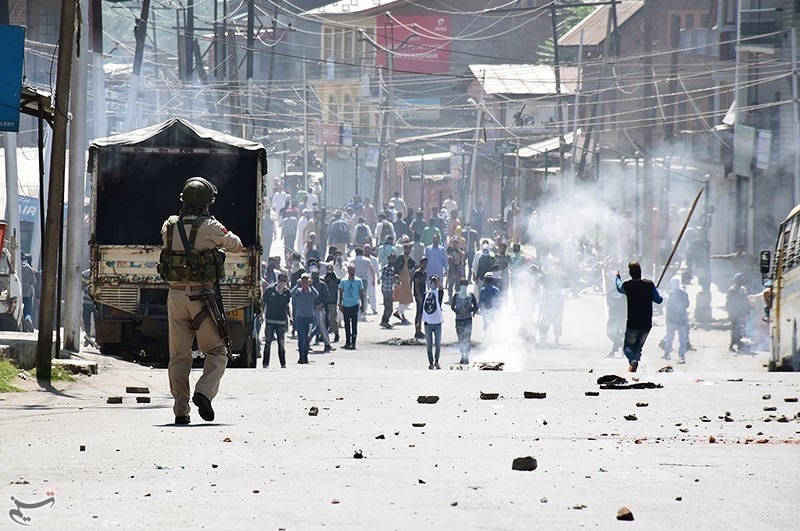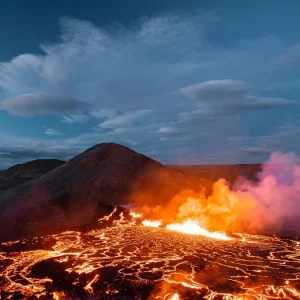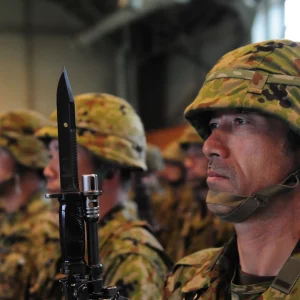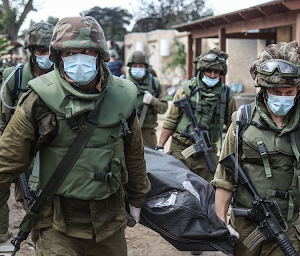On August 5th, 35,000 paramilitary Indian troops mobilized to join the 700,000 already stationed in Jammu and Kashmir, the Indian-controlled state in the Kashmir region. Soon after the move, the entire state was put under intense lockdown, which the Indian parliament claimed was in response to a new and violence-prone political movement that had emerged in Kashmir within the past year. On the very same day, the constitutional basis of Jammu and Kashmir’s governmental legitimacy — Article 370 — was revoked from the Indian constitution. This development, however, was not mentioned in the public announcement.
A Brief History of Kashmir
Article 370 is a controversial provision that was added to the Indian constitution in 1949, two years after the country gained independence from Britain. Independence also included the partition of the previous colony into the three states: Pakistan, Bangladesh and India. This partition forced millions of Muslims and Hindus to migrate to Pakistan and India respectively and a horrific period of religious violence ensued, the extremity of which had never existed in India before. Even still, the partition line was not perfect and intercepted 650 princely states, one of which was Kashmir.
The struggle over Kashmir between India and Pakistan erupted into war within the same year of independence. Two years later, India managed to gain control over what is still known today as the state of Jammu and Kashmir. It was after India successfully acquired the region that Article 370 was added to the constitution. Under the provision, Jammu and Kashmir were given semi-autonomy, including the right to its own flag, constitution and control over all matters other than defense and foreign affairs.
Despite the provision, territorial claims plunged India and Kashmir into several more wars and smaller conflicts that collectively spanned the latter half of the twentieth century. Today, Kashmir is still split into the states of Jammu and Kashmir and the Pakistani-administered region known as Azad Jammu and Kashmir, but both countries claim that the entirety of the region is rightfully theirs.
The Indian Government’s Assimilation Plan
The revocation of Article 370 may seem random, but in reality, the decision was part of a larger plan to assimilate Jammu and Kashmir into the greater Indian country. In previous years, the leading party of India, Bhartiya Janata, has voiced concern over how the article has prevented Jammu and Kashmir from further integrating with India and has also publicized how its revocation is only one of many policies that are in the works. The BJP also has plans on dividing Jammu and Kashmir into two separate union territories in a type of administrative division unique to India, which are usually granted their own governments. One of the union territories, which will retain the title Jammu and Kashmir, will follow the standard set-up and gain its own legislature, but the second, which will take the name Ladakh, will not.
Although BJP will not directly explain why both regions will not be given a legislature, looking at their respective demographics gives more than enough of an answer: while the union territory named Jammu and Kashmir has a majority Hindu population, Ladakh has a noticeably Muslim presence. In other words, BJP is devising a plan that undermines the Muslim population — almost 67 percent of Jammu and Kashmir — while giving power to Kashmiri Hindus.
Ensuring that the Hindu minority is the politically dominant demographic also seems to be the reason why Jammu and Kashmir is currently under lockdown. As said earlier, a new political movement developed in the Indian-administered state in March of this year, known simply as Jammu and Kashmir’s People’s Movement. Started by former I.A.S. Officer Shah Faesel, the now-independent politician claims that his goal is to, “end the corrupt system and work towards a peaceful solution to the Kashmir issue.” In only a few months, Faesel gained hundreds of supporters. However, on August 14th, only about a week after Jammu and Kashmir went on lockdown, Faesel was detained and arrested at the New Delhi Airport. He was only one of many Kashmiri politicians who were arrested under the Indian claim that the crackdown was necessary to prevent growing political disorder and separatist sentiments.
Pakistan’s Response
On the other side of the table, Pakistani civilians and politicians are also outraged by both Article 370’s revocation and the lockdown. The reaction is not due to border disputes, at least on the surface level. India, after all, hasn’t encroached on Pakistani-administered Kashmir by revoking Article 370. Instead, Pakistan’s reaction stems from the religious and ethnic connection shared between the country and over two-thirds of Jammu and Kashmir population, as both are majority Muslim. In light of the outrage, Prime Minister Imran Khan had to warn Pakistani citizens from taking up arms to fight Indian troops in Kashmir, stating that, “If someone from Pakistan goes to India and he thinks he will fight in Kashmir […] the first person he will be inflicting cruelty on is the Kashmiris. He will have acted as an enemy of the Kashmiris.”
However, this announcement has not stopped the Prime Minister from voicing his opinions on the Kashmiri situation. A few days after the lockdown, Khan condemned India’s new Kashmir policies as “ethnic cleansing” and “impending genocide” and compared them to policies of Hitler’s Nazi regime. A minister in his cabinet has also called for a mutiny within the Indian army. More direct retaliation was also taken, as Pakistan announced within a week of the lockdown that it would completely suspend trade with India and send its top diplomat out of the country. India responded by downscaling on all diplomatic relations with Pakistan, but no other measures have yet been taken to defend its new policies.
Whether or not Pakistan is actually planning on using military force is still up in the air. The Pakistani government publicly announced that it was ready to “exercise all possible options” in defense of those still held in the lockdown zone, a very open-ended statement which was immediately met by Indian claims that Pakistan was planning on deploying troops to Jammu and Kashmir in an attempt to take advantage of the situation. Prime Minister Khan denied such allegations, and so far, Pakistan has not made any advancements that would counter him.
Instead, Khan seems to be approaching the situation diplomatically. On September 22nd, the Prime Minister traveled to the United States with the intention of meeting with American politicians and garnering support. On September 23rd, Khan is also scheduled to meet with President Trump and then address the 74th session of the United General Assembly four days later. The Prime Minister has stressed that his main objective is to act as an advocate for the Kashmiri people still living under lockdown conditions, and, as Pakistan’s permanent representative to the United Nations stated, “to find a peaceful solution to the Kashmir dispute.”
Life Under Lockdown
For an event that has captured so much international attention, information on the day-to-day circumstances of the Jammu and Kashmir lockdown has been limited, courtesy of the internet blackouts that are a part of the procedure. So far, it has been reported that just like Faesel, hundreds of Kashmiri politicians have been arrested in some form. Some have been put under house arrest while others have been jailed outside of Kashmir. Along with the politicians, hundreds of trade unionists and civilian men and boys have also been arrested during police night raids. In an attempt to prevent the arrests, neighborhoods have been organizing night watch shifts and putting up makeshift barricades around residencies — but not all have been able to do so.
For some Kashmiris, being confined to their towns has become life-threatening, as advanced medical facilities are not available in abundance and medicine has not been restocked at every local pharmacy. The lockdown has also affected the Kashmiri economy. Apple harvest season is normally during August and September, but because civilians are too scared to go to mosque, let alone go to work, produce has been neglected and left to rot. Other major business sectors such as tourism and handicraft-work have also been stalled for the year, leaving Kashmiris feeling hopeless.
Signs of Impending Violence
The future for Jammu and Kashmir is foggy. However, the increasing tensions between India and Pakistan, or simply within Kashmir itself, could result in even more violence. Kashmir has already endured around 40,000 deaths since the mid-twentieth century, so its residents are understandably terrified of what the future may hold. Unfortunately, if Pakistan keeps its promises, military involvement may still be on the horizon. Even without Pakistani involvement, the Indian-installed lockdown may turn violent on its own if it hasn’t already. At the moment, both Indian and Pakistani Prime Ministers are set on rallying international support, and it remains unclear as to who will win the most favor.
Even still, the extent to which non-governmental organizations such as the United Nations can actually interfere also depends on how volatile the situation becomes — or is uncovered to be. And yet, there is also the question of if Kashmiris will take up arms against Indian troops themselves. At the moment, it seems unlikely, but the two-month mark for the lockdown is also closing in, which means two months without the internet, phone use, or a sense of normalcy; patience will surely be wearing thin.
Featured Image: Seyyed Sajed Hassan Razavi, Wikimedia Commons






Be First to Comment